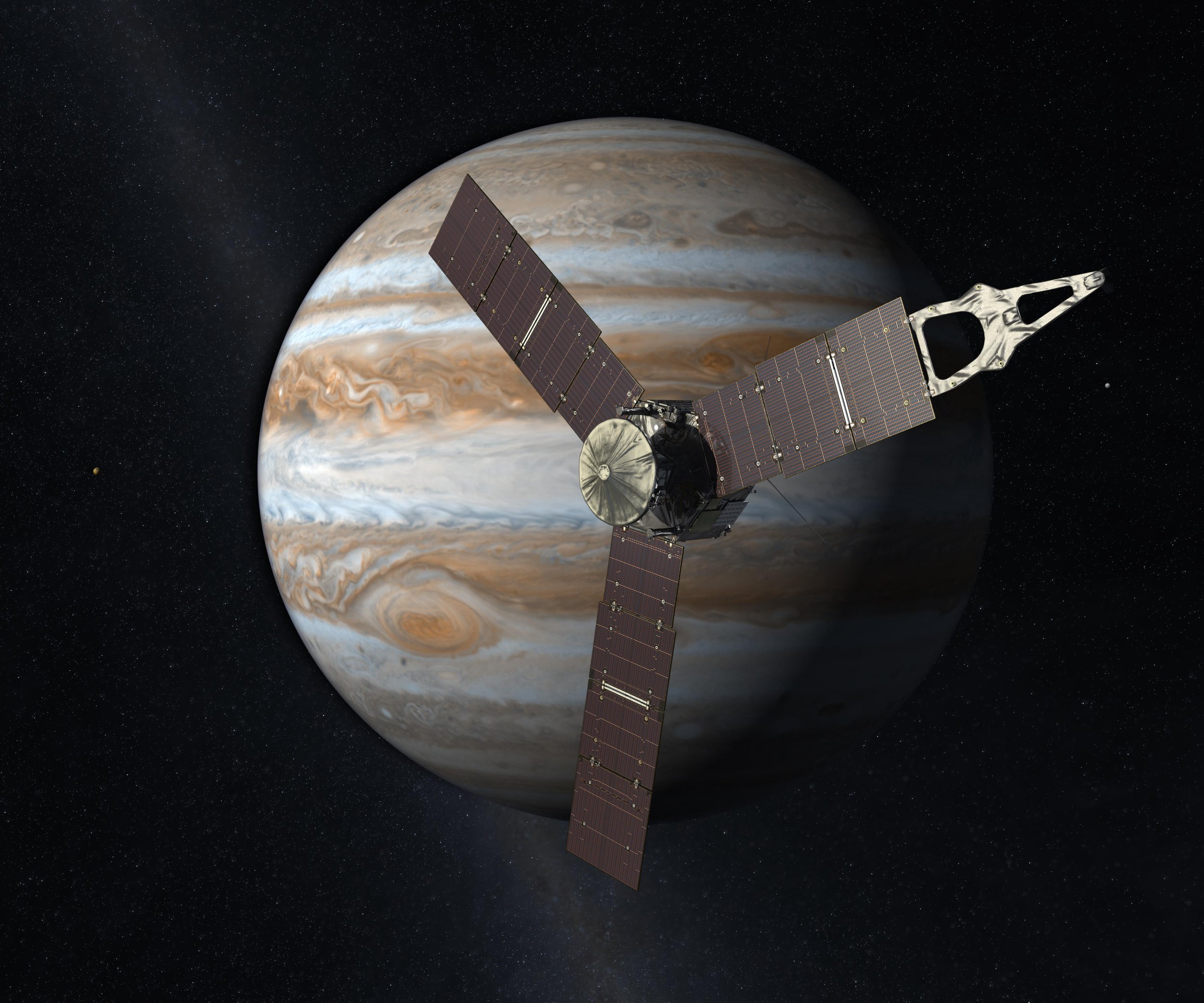KEY POINTS
- Jupiter recently made a close pass of Jupiter’s moon Io
- Io is the “most volcanically active” body in our solar system
- Future flybys will come much closer to the volcanic moon
NASA’s Juno spacecraft has captured new snaps of Jupiter’s moon Io during a recent flyby, and the resulting photos are incredible.
The Juno spacecraft flew past Io on May 16 for its closest flyby of the Jovian moon to date. It captured the images during the flyby from just about 22,060 miles (35,500 kilometers) from Io’s surface, and they show incredible views of the volcanic moon.
In the photos, one can catch a glimpse of the rather intense-looking surface of Io, which makes sense, as the moon is truly a pretty impressive world. This is because Io isn’t just any volcanic world — it’s the “most volcanically active” body in the solar system, according to NASA.
Io is “in constant torment,” the agency explained. As a moon of Jupiter, the biggest planet in our solar system, it’s constantly affected by it and the other Jovian moon’s powerful gravitational pulls.
The result of this tug-of-war: Io keeps getting pulled and stretched, keeping the many volcanoes on its surface so active that it even has lava fountains and lakes of molten silicate lava. And the data from Juno’s exploration of it could help us understand this volcanic world better.
“We are entering into another amazing part of Juno’s mission as we get closer and closer to Io with successive orbits,” Juno principal investigator Scott Bolton said in a statement prior to the flyby.
And as incredible as the new images are, future flybys will likely have more stunning images to gather as they are planned to go much, much closer to Io than ever before.
“Our upcoming flybys in July and October will bring us even closer, leading up to our twin flyby encounters with Io in December of this year and February of next year, when we fly within 1,500 kilometers of its surface,” Bolton added. “All of these flybys are providing spectacular views of the volcanic activity of this amazing moon. The data should be amazing.”
Indeed, Juno just keeps on providing stunning imagery.
In April, for instance, NASA celebrated Juno’s 50th close pass of Jupiter by sharing some of the incredible images it had captured during its mission thus far. This included stunning photos like close-ups of a storm on Jupiter looking quite like a giant eye, the dark shadow of Io cast on the surface of Jupiter and a rather groovy-looking photo of Jupiter’s other moon, Europa.
Launched in 2022, Juno arrived on Jupiter in 2016 and has since been providing valuable data that has greatly increased our understanding of Jupiter and even the formation of our solar system. Having completed its prime mission, it is now on its extended mission to expand on its earlier discoveries.
“Juno is now an explorer of the full Jovian system,” NASA noted.
NASA






